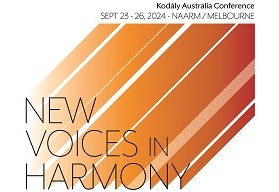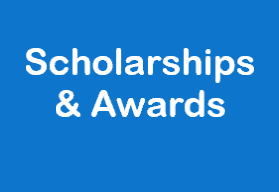Gabrielle Emery-Reece

After one year as a primary teacher trainee at the Queensland Teachers’ College, Gabrielle was selected to be in the first group of students who would graduate as Music specialists for the Qld Secondary Schools.
Gabrielle taught in Brisbane, the Gold Coast, Armidale NSW and Townsville, and in 1971 was appointed to the staff of the Townsville Teachers’ College, which became the Townsville CAE then James Cook University. There she was a Lecturer and Senior Lecturer in Music Education, before moving to Toowoomba in 1985 to the Darling Downs Institute of Advanced Education / University of Southern Queensland. In 1988 Gabrielle taught at the Wuhan Conservatorium in China for a month, in an exchange between USQ and Wuhan. She resigned from full-time work in 1992, moved back to Brisbane, worked initially as a freelance presenter of in-service courses throughout the State, then taught part-time (music and general subjects) in numerous schools until 2006.
From the start of her career Gabrielle had a special interest in continuing education, her own and others, so became involved in various professional organisations which provided teachers with much-needed support and knowledge. In 1964 she was Foundation Secretary of the Qld Secondary Schools’ Music Teachers’ Association which pioneered vacation schools for Qld classroom music teachers as well as performance opportunities for students. Later, as Foundation Secretary of the North Qld branch of ASME, Gabrielle arranged for ASME and the Townsville CAE to co-sponsor visits by distinguished music educators (Deanna Hoermann, Kati Forrai, Kati Losonczy, Rodney Eichenberger, Christoph Maubach and many others) who brought in-service opportunities to teachers throughout the region.
In 1971 Gabrielle was introduced to the Kodaly concept through Ersebet Szonyi’s articles in the ASME journals. Impressed, she explored this approach further, and in 1974 joined the Kodaly Music Association which had been formed in Sydney and later became KMEIA.
A turning point in Gabrielle’s teaching was when she went to Sydney in 1978 to see, first hand, the implementation of the Developmental Music Programme being pioneered by Deanna Hoermann, and in 1979 to attend the International Kodaly Society Symposium. Gabrielle then went to all the National Kodaly Summer Schools to learn from outstanding overseas exponents such as Peter Erdei, Margaret Holden, Kati Forrai, Sean Diebler, Mary Goetze, Miklos Takacs, Gabriella Thesz and Kati Losonczy. These Summer Schools were the training programmes for the vast majority of teachers interested in the Kodaly approach, and also provided an invaluable network of like-minded people.
On behalf of KMEIA’s national body, Gabrielle presented Music for Children Classes in Townsville in 1979. After moving to Toowoomba she joined the KMEIA Qld Branch, and from 1987 to 2005 served on both the Queensland Committee and the National Council, including terms as Vice-President and Editor of the KMEIA Bulletin. Gabrielle was a regular speaker at KMEIA events and presented at many courses which promoted the Kodaly approach. She also wrote a number of articles for both the Qld newsletter and the KMEIA Bulletin. She was a long-term member of IKS.
When Gabrielle was studying at Holy Names College in California in 1980-81 the faculty included Maria Katanics, Helga Szabo, Lois Choksy, Ivy Rawlins and Ed Bolkovac. Another highlight in her career was to study in Hungary for three months in 1990, taking private musicianship lessons with Lilla Gabor and classes for international students (methodology with Ildiko Herboly and conducting with Istvan Parkai) at the Liszt Academy of Music. Having had the privilege of meeting and studying with such excellent Kodaly educators, some of whom were Zoltan Kodaly’s pupils, Gabrielle became a strong advocate for maintaining the true essence of the Kodaly philosophy while adapting the methodology for the local situation. She remains committed to assisting teachers, especially beginning teachers, and to supporting KMEIA in its important work.
Watch Kodály Queensland’s Interview with Gabrielle!
Honorary Life Members
Latest News
ASME XXV National Conference 2025
The Australian Society for Music Education (ASME) XXV National Conference will be held from September 26 to 29, 2025, at the Queensland Conservatorium, Griffith University. The call for paper and workshop presentations has been extended until this Friday, 14 February 2025. As …
Read more
Season’s Greetings from Kodály Australia
As we near the end of 2024, I extend my warmest wishes on behalf of Kodály Australia for a joyful festive season and new year ahead. This year, there has been an extensive offering of professional learning activities provided for …
Read more
Congratulations Katharine Finlayson
Congratulations to Katharine Finlayson (ACT) who has been awarded Honorary Life Membership of Kodály Australia. Honorary Life Membership is Kodály Australia’s highest accolade and is given in recognition of an individual’s ongoing and highly significant contribution to the association and …
Read more
1000 Active Members!
Dear Members I am pleased to share that Kodály Australia recently recorded over 1000 active members in our database. This is an incredible achievement for our community and worthy of acknowledgement. Please know that your continued membership of Kodály Australia …
Read more
Cuskelly College of Music Summer Music Program 2025
The Cuskelly College of Music has announced details of the 2025 Summer School Music Program to be held at St Laurence’s College in Brisbane from Monday, 6 January to Friday, 17 January 2025. An extensive and rich program is on …
Read more


